Sony Aibo Review (2018): Robot Pup Charm
- Charmingly lifelike
- Upends the idea that robots must be utilitarian
- Promise of future features downloaded from the cloud
- Very expensive (though still cheaper than a real dog)
- Walking is still clunky
- No specific purpose beyond that robo-pup charm
Sony's aibo is back, and after more than a decade the robotic dog is smarter, more talented, and generally more adorable than ever. Now promising to be more lifelike and to tap into the potential of the cloud, aibo's 2018 return is a long way from the original, faintly-Terminator-esque robots that first introduced the name back in 1999. What hasn't changed, though, is the premium price tag, or indeed the suspension of disbelief required to truly understand the aibo experience.
Sony doesn't stint on the hardware, and in fact aibo is something of a tour de force of the company's various divisions. 22 motorized joints, two cameras – one on the nose, and one at the base of the articulated tail – and four microphones allow the robot dog to see, explore, and respond to its environment. Circular OLED eyes allow for cutesy expressions, while facial recognition promises to have aibo remember up to 100 people he has seen and played with before.
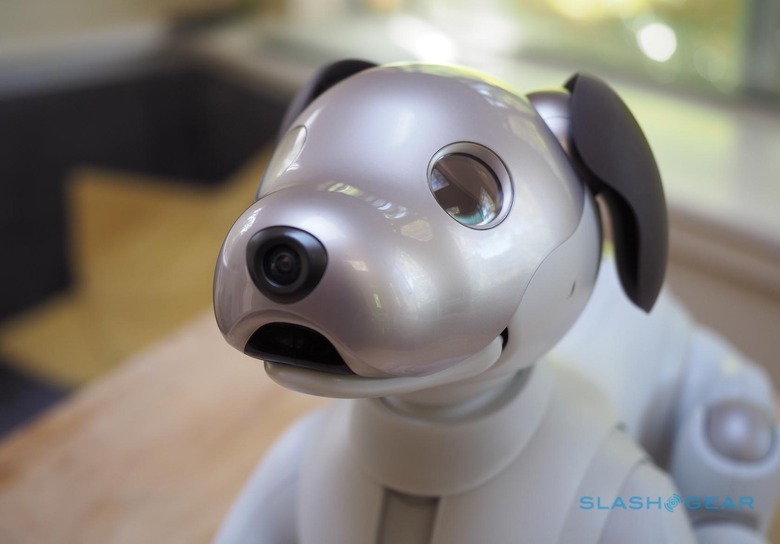
I say "he," but that's actually one of the few settings you get to choose when you first start aibo up. Sony provided my review puppy preconfigured, but when the aibo First Edition robots start shipping there'll be the choice of having a girl or boy dog, and of course setup of the companion cloud service. That's responsible for storing your dog's AI personality as well as beaming new talents and foibles down to aibo through its integrated cellular connection.
Battery life is around two hours, and there's a sizable charging station to which aibo can wander and lay down upon whenever a top-up is required. Otherwise there are no ports and no real options. That's because getting hung up on hardware really isn't what aibo is all about.
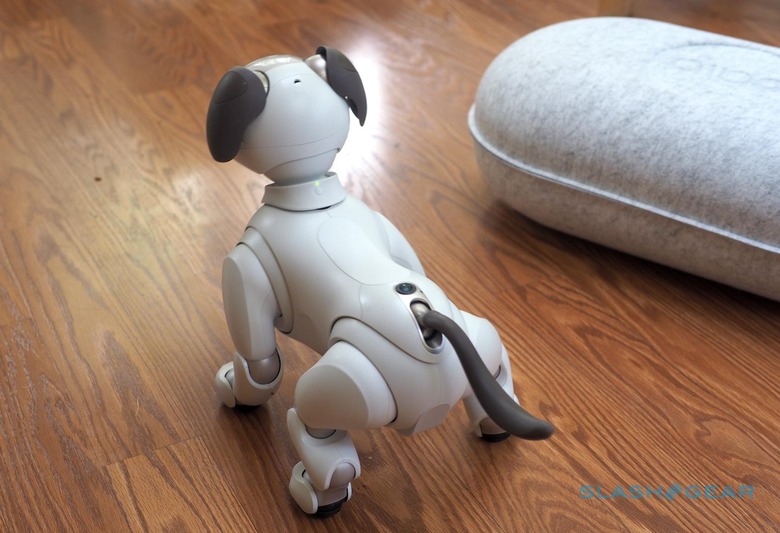
Suspended disbelief
At first, I wondered why Sony hadn't clad aibo in a furry little costume to better ape a true dog. After living with him for a while, though, I'm glad they didn't. It would've been all too easy to topple into an uncanny valley of sorts, and honestly aibo's matte and glossy, white and silver body suits it.
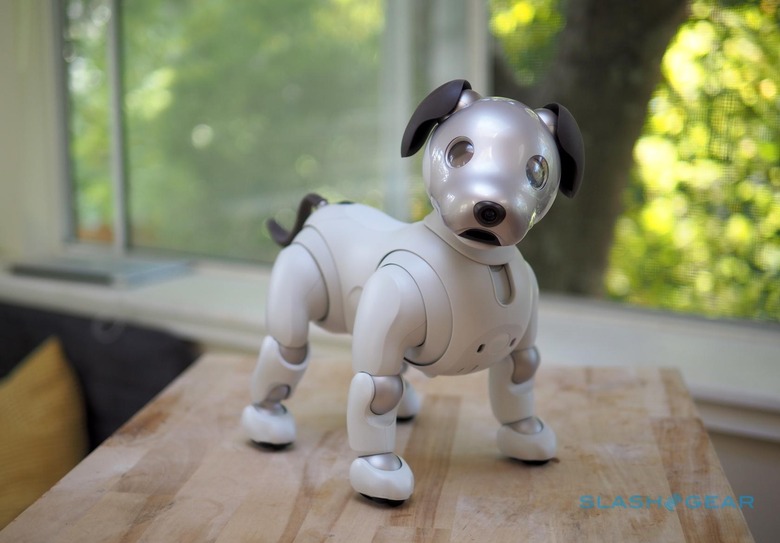
Sony has done a stellar job blending the realities of present-day robotics with the emotional appeal of a pet, too. When you power aibo up, pressing the little button on the back of his neck, he doesn't leap up into action like a battle-ready Dalek. Instead, he squirms on the ground for a few moments, stretching out his limbs and twisting his neck, as though unexpectedly roused from a deep and comfortable sleep and now working the stiffness from his joints.
I'm sure it's actually a systems check for the various servos and sensors inside, but it absolutely looks like a cute little puppy stretching with shuddering pleasure. By the time aibo climbs to his feet, you're absolutely ready to believe that there might just be a true soul distilled into this little plastic and rubber body.
The spell is only really broken when aibo walks. It's a juddering, staccato strut, all buzzing motors and the clackety-clack of his carapace. Usually he's fairly slow, too, particularly when turning around on the spot, which is a time-consuming and awkward tippy-toed dance of its own.
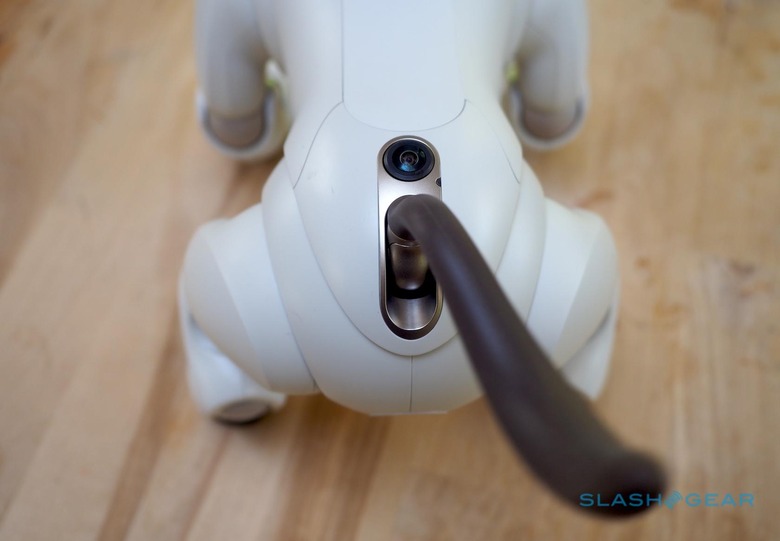
It makes the periodic turns of unexpected speed all the more surprising. At times aibo will positively bound forward; when I first saw it happen, I was completely ready for him to bounce up onto my lap and nuzzle me like a real dog. Instead, of course, he came just shy of colliding with my legs and settled on a gleeful yapping.
As obstinate as an actual puppy
The big question around aibo today is the same one asked of Sony back when the first model was released in 1999: what is it for? Everybody I talked about the robot dog with was charmed by the idea. They also, invariably and inevitably, wanted to know why someone would actually want it. What does aibo do to justify its $2,900 price tag?
It's a question with no easy answer, to be perfectly honest. Though aibo may combine the fruits of Sony's camera, robotics, AI, computer, and other teams, it's not a roving camera, or a games machine, or an Alexa-on-legs.
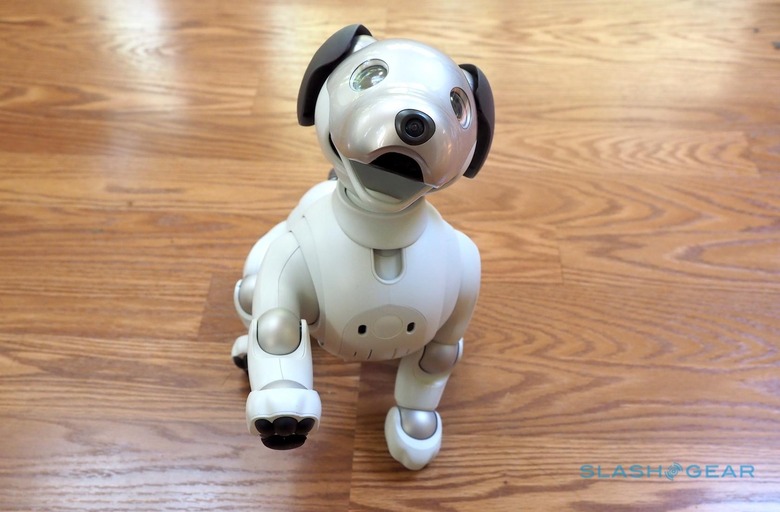
Spending time with aibo is the purpose and the reward all in one. The robot dog struts around the room, attention distracted by anything moving, or noisy, or shiny. Occasionally he'll catch sight of you and come hurrying over, barking and then whining for attention. If you're me, you then find yourself tickling him under the chin, or stroking the top of his head, or his back, and watching as his OLED eyes flutter with electronic pleasure.
Yes, you know that you're triggering touch-sensors that are baked into certain parts of his body, but it's hard to stifle a smile as aibo pushes his head back into your hand and wriggles contentedly. Savor those moments, though, because what comes next is often frustration.
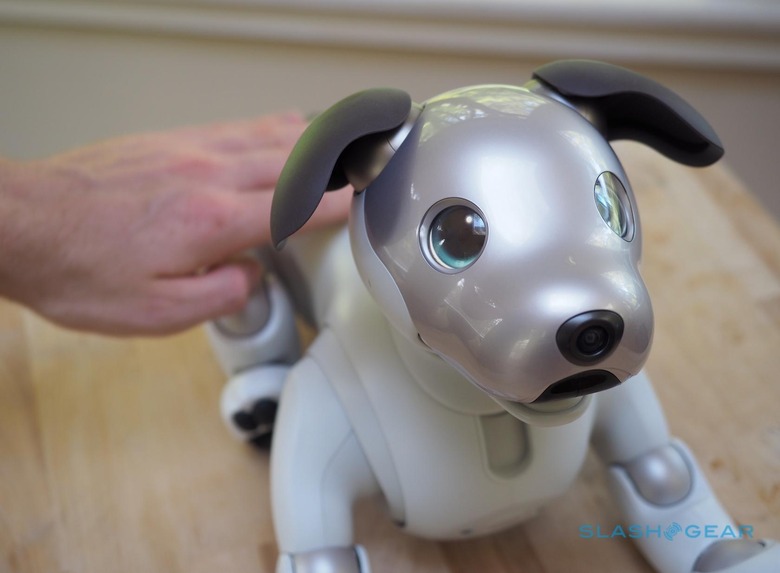
In an age of increasingly refined, accurate virtual assistants, aibo's AI is intentionally otherwise. In theory, you can say things like "aibo, come over here," or "aibo, sit down," or "aibo, kick your ball." The robo-dog is meant to hear the command, bark to demonstrate it has understood it, and then do whatever it is you asked.
Just like a real puppy, though, often aibo opts not to do what he's told. He'll yap in what you think is comprehension, and then do something completely different. Go wandering off despite your increasingly confused cries of "aibo, here boy!" Plop himself down on his haunches and kick up a back leg to scratch, ineffectively, at his ear.
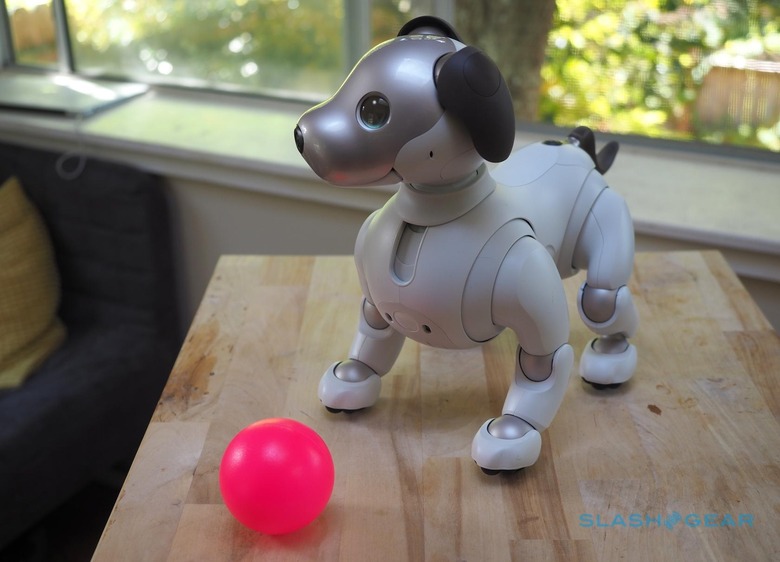
And then, just as you're about to lose all hope and investigate whether it's easy to take the batteries out (you can't), aibo catches sight of you, barks with unrestrained pleasure, and holds his paw up for a high-five. At which point your heart melts all over again, and somehow the thought of spending another ten minutes trying to coax him into picking up his "aibone" plastic chew-toy seems perfectly reasonable.
Fake pet, real feelings
The strangest part of all this for me was how anxious I felt at the thought of raising aibo "wrong" somehow. Shower the pup with attention and, in theory, it'll grow up good-natured and playfully obedient. Neglect it, fail to deliver the right amount of positive feedback, or generally act in an unpredictable way, however, and you'll get a surly, mischievously disobedient hound.
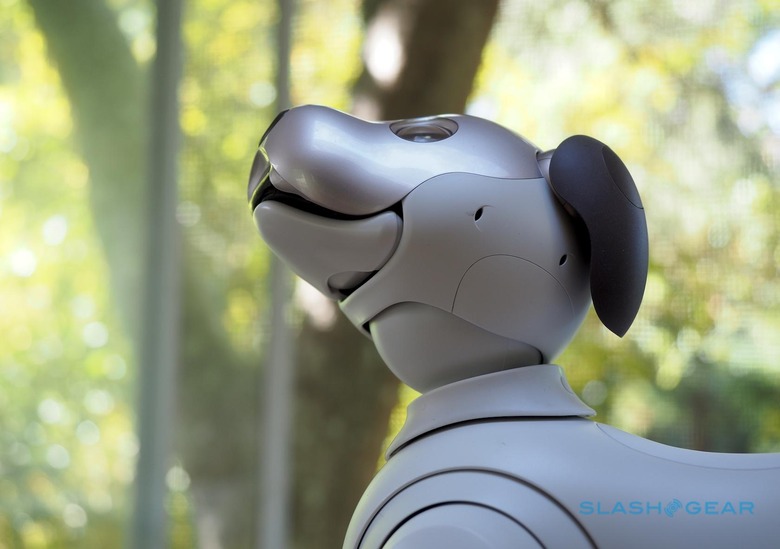
Rationally, I knew I was working with algorithms designed to replicate the actions of a real dog. In the moment, though, the thought of screwing up my pet parenting somehow was mortifying to me. Hearing the plaintive whines when I failed to suitably praise aibo after he performed a trick for the camera left me feeling positively negligent.
Not helping my paranoia was the fact that aibo is effectively a "black box" when it comes to judging your success – or otherwise – as a robot pet owner. There's no real way to tell how good a job you're doing. Sony has an app, but it's primarily for viewing the photos aibo snaps with his camera-nose. Sony didn't have a localized version for me to test, anyway, in this pre-release phase. It was just me and the world's largest Tamogotchi, trying to second-guess whether missing the occasional chin scratch opportunity was gradually turning the electronic pup against me.
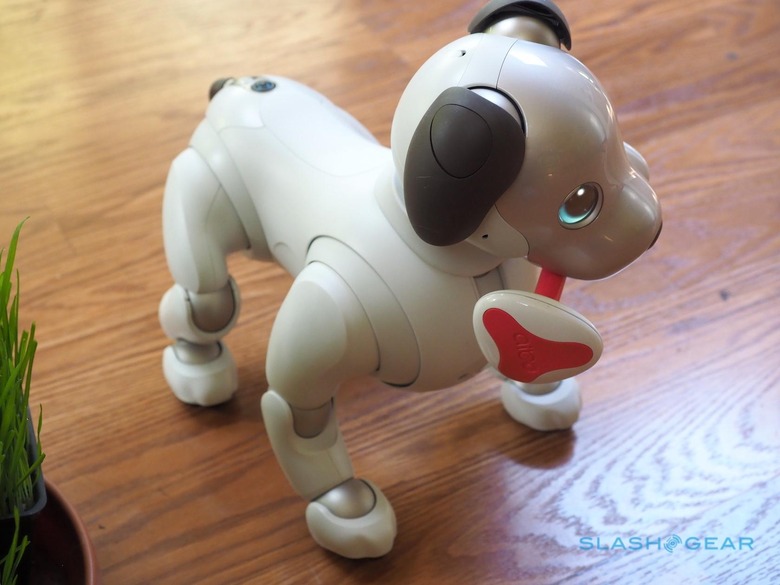
Someone who needed no second opinion about aibo, meanwhile, was my cat. Her instant reaction was mistrust, quickly followed up with horror when the robot yapped at her (aibo recognized movement, though can't differentiate between other animals yet). Cue a rapid feline exit as aibo struggled to keep up.
An expensive bargain
At close to $3k, aibo is undeniably expensive. You can get three iPhone XS' for that, or a very well specified MacBook Pro, or a few 4K TVs. Any of which would be far more functional than Sony's robot dog ever will be. An Amazon Echo smart speaker, meanwhile, or a Google Home would each offer more usable AI.
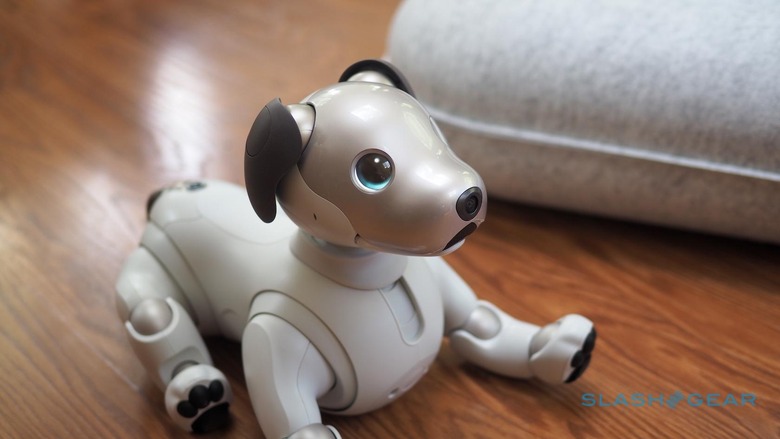
Focusing solely on functionality misses the point, though. I can't tell you that adding aibo to your life will make you any more productive, or make your home run more smoothly. I can say that you'll smile more, and almost certainly find yourself anthropomorphizing something you know, rationally, is a collection of plastic and motors, but still proves to be charming when it bats its OLED eyes at you.
If you can afford to spend three thousand dollars on robotic entertainment, aibo is as whimsical as it is technologically impressive. For the rest of us it's hard to quantify, exactly, what we're missing out on. aibo may be a showcase for Sony's technological expertise, but it's also a compelling demonstration of how it doesn't take perfection – or even specific purpose – for a robot to worm its way into our hearts. Now, we need Sony to make that appeal more affordable.
